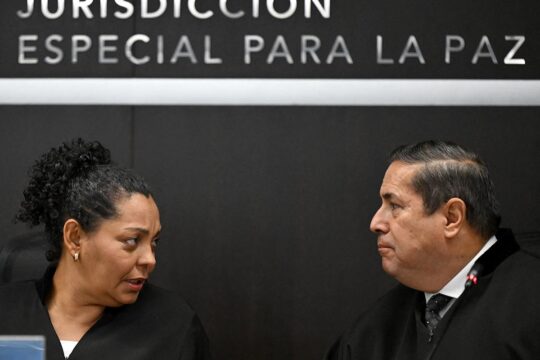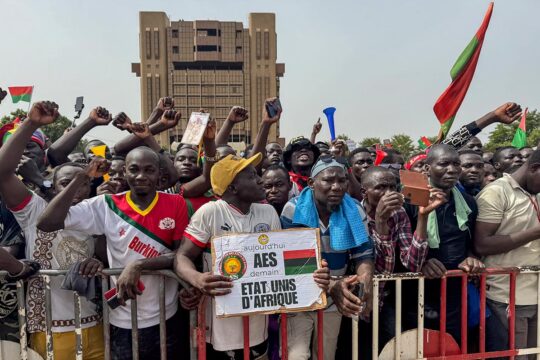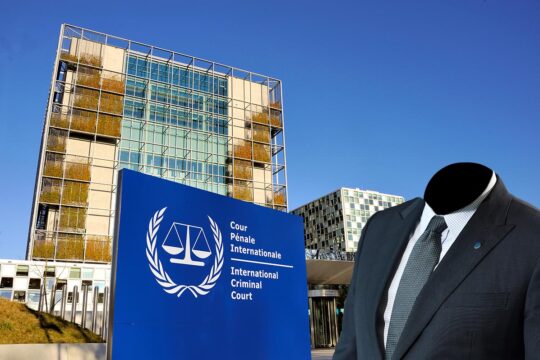The official line is that the “no” vote won the referendum in Colombia. The internationally lauded peace treaty with the FARC guerillas was rejected, and now nobody knows what the country’s fate will be.
But did “no” actually win?
The numbers divide four ways, rather than just two “no” and “yes” answers: 6,431,376 against the treaty, 6,377,482 in favour, 86,243 unmarked ballots, and 170,946 nullified ballots.
The referendum process itself was without doubt transparent and fair, and Colombia can be truly proud of it. But there were nonetheless several inevitable sources of statistical error in the counting process that could have swamped the razor-thin victory margin of 53,894. This means that saying “no” definitively won is statistically incorrect.
First, the counting methods. Votes were recorded on pieces of paper and hand-counted in the evening by people who must have been exhausted after working the whole day at polling stations.
The technology of tired humans sorting pieces of paper into four stacks is, at best, crude. As a large research literature has made clear, we can reasonably assume that even well-rested people would have made mistakes with between 0.5% and 1% of the ballots. On this estimate, about 65,000-130,000 votes would have been unintentionally misclassified. It means the number of innocent counting errors could easily be substantially larger than the 53,894 yes-no difference.
Second, there were 170,946 nullified votes. As the photo below shows, the ballots were so simple that it’s hard to imagine how there could be so many invalid ones.

Of course, it is correct to toss out any ballot with both “yes” and “no” marked, but it seems surprising that so many ballots were apparently spoiled this badly.
Again, the consistency of the counters’ decisions could have been decisive. What tended to happen when the “yes” was pretty well marked, but there were some minor scratches on “no”? And were the exact same criteria applied uniformly for every piece of paper in every polling station? We have no idea. But as has been shown in experiments in this field, it seems inevitable that if these 170,946 ballots were reanalysed with fresh eyes, a significant portion would be reclassified – perhaps even as many as the deciding margin.
Red flags
Then there are the blank or nullified ballots. It’s quite possible that many of the 86,243 unmarked ballots were simply marked very lightly, meaning their votes did not register in the tired eyes of well-meaning volunteer counters – and the nearly 270,000 voters whose ballots were rejected as blank or null must have had some voting intention that they somehow failed to express.
So these ballots represent 270,000 voting failures, more than four times the victory margin. Even if many of these ballots were reasonably well-classified, this figure is an enormous red flag.
And as with all manual voting systems, one cannot rule out at least some degree of misclassification of papers on some scale, no matter how small. We know of no evidence of cheating, and Colombia is to be lauded for the seriousness of its referendum process, but the distinction between intentional and unintentional misclassification by individual counters can occasionally become blurred in practice.
As a study that asked voters to judge “ambiguous” ballots demonstrated, those doing the counting can be driven by unconscious biases. For example, they might have unconsciously nullified a “yes” ballot for a tiny flaw while tallying a similarly flawed “no” vote as a definite vote against. While detailed instructions were made available to the counters, the final decision was made by an individual who had to translate in real-time what officially qualified as a flaw and what didn’t.
In total, therefore, the result presents as many as 400,000 opportunities for classification mistakes. That’s before counting any systematic human behaviours not listed above. This represents a numerical uncertainty that swamps the victory margin of 53,894.
None of the above analysis proves that most voters on Sunday supported the peace treaty, but there’s an immense difference between declaring that “no” won and declaring the result inconclusive. This referendum has momentous implications, not just for the Colombian people but also for the many national governments and the United Nations that supported the peace deal. It is very sad that a country’s future may be dictated by an inaccurate declaration (one readily amplified by international media).
The bottom line is that declaring a victory for the “no” camp violates principles of statistical uncertainty, and is therefore a scientifically incorrect statement. Colombians deserve better.
![]()
Michael Spagat, Professor of Economics and Head of Department, Royal Holloway and Neil Johnson, Professor of Physics, University of Miami
This article was originally published on The Conversation. Read the original article.





